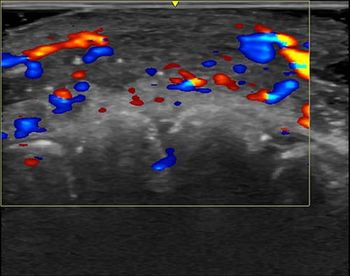Ultra-High Resolution Brain PET: A 'Quantum Leap' for Neuroradiology
In a recent interview at the SNMMI conference, Roger Lecomte, Ph.D., and Vincent Doyon discussed the advent of ultra-high resolution (UHR) brain positron emission tomography (PET), which reportedly offers double the spatial resolution of conventional PET and may facilitate earlier detection of Alzheimer’s disease and other conditions.
Emphasizing pixelated detectors and an isotropic spatial resolution upward of 1.25 mm, ultra-high resolution (UHR) brain positron emission tomography (PET) represents a significant advance that provides improved characterization and quantification of brain regions that could not be seen with whole-body PET, noted Roger Lecomte, Ph.D., during a recent interview at the
“The spatial resolution is a factor of two better than HRRT (High Resolution Research Tomograph) and a factor of three better than any clinical scanners today. It’s a quantum leap in terms of spatial resolution,” said Dr. Lecomte, a professor of nuclear medicine and radiobiology at the University of Sherbrooke in Quebec, Canada. “To image the brain where you have small structures in the cortex, the brain stem and different regions of the brain, spatial resolution is very important to be able to detect the uptake of radiotracers in very tiny structures.”
One of the areas of improvement with UHR PET imaging was the enhanced visualization of the subfields of the hippocampus that can play a role in the progression of Alzheimer’s disease, according to Vincent Doyon, who presented some of the preliminary findings with UHR PET at the
“Depending on how these subfields are affected in the disease, we can see whether treatments are effective for the patient,” added Doyon, a master’s student in the Department of Radiation Sciences and Biomedical Imaging at the University of Sherbrooke.
Donyon added that UHR PET offers enhanced visualization of brainstem nuclei, including raphe nuclei, that may aid in the diagnosis and treatment of a variety of neuropsychiatric conditions, including schizophrenia, depression, and anxiety disorders.
For other insights from Dr. Lecomte and Mr. Doyon, watch the video below.
Newsletter
Stay at the forefront of radiology with the Diagnostic Imaging newsletter, delivering the latest news, clinical insights, and imaging advancements for today’s radiologists.





























